Women Strike for Peace, 1961-1975
(Photos below)
Women Strike for Peace (WSP) was formed in 1961 after over 50,000
women across the country marched for peace and against above ground testing of nuclear weapons. By the mid 1960s the focus of the organization shifted to working against the Vietnam war. Dorothy Marder took photographs at many WSP demonstrations on the East Coast and her images appeared in WSP publications. Her photographs show the women behind WSP who wanted to protect their
families from nuclear testing and a
male-dominated militarism. Leaders of the organization include
Dagmar Wilson, Bella Abzug, Amy Swerdlow, Cora Weiss, and many more are featured in Dorothy
Marder's photography.
WSP is significant among peace organizations for
its lack of official hierarchy and exclusive dependence on the
volunteerism of women across the United States. Composed of mostly
white, educated, middle-class women, the WSP utilized the post-World War II female domestic roles of mother and wife to
call women to advocate for peace for the sake of their children. Because
of this core conviction of familial protection, WSP leaders believed
they could convince the “average woman” to work for peace. In
doing so, WSP women challenged Cold War era notions of militarism and
gendered roles.
Counted as a important success for WSP, the passage of the 1963
Test-Ban Treaty agreement between the Soviet Union and United States
prohibited above ground nuclear testing. By 1964, WSP members
focused their energies on protesting the Vietnam war. Among their
activities during the war, WSP women organized countless public
demonstrations and rallies across the United States, met with women from
North and South Vietnam, organized boycotts, met with United Nations
and political figures, and counseled draft resisters. The group
maintained a strong and concerted opposition until the war’s end in
1975.
Although WSP was led by strong women, feminism and Women’s
Liberation were not facets of the organization until the late
1960s. As the Women’s Liberation Movement grew in the 1970s, some
WSP members became even further radicalized. In January of 1969, WSP
joined with younger women from other parts of the anti-war movement and
Women’s Liberation to organize the first all-women’s march in
Washington, D.C. to protest the war. Calling themselves the
Jeannette Rankin Brigade, after the first woman elected to Congress in
1917, hundreds of women marched in the nation’s capital. Rankin herself joined the march and helped the women gain access to members of
Congress. After the Vietnam war, WSP returned to its original
focus, working against nuclear proliferation. Today, WSP is no
longer an active organization although the group's legacy of peace activism
lives on in contemporary women peace organizations such as Code Pink.
Sources:
Amy Swerdlow, Women Strike for Peace, Chicago: The
University of Chicago Press, 1993. Print.
Harriet Hyman Alonso, Peace as a Women’s Issue, Syracuse:
Syracuse University Press, 202-210, 221-222. Print.
_______________________
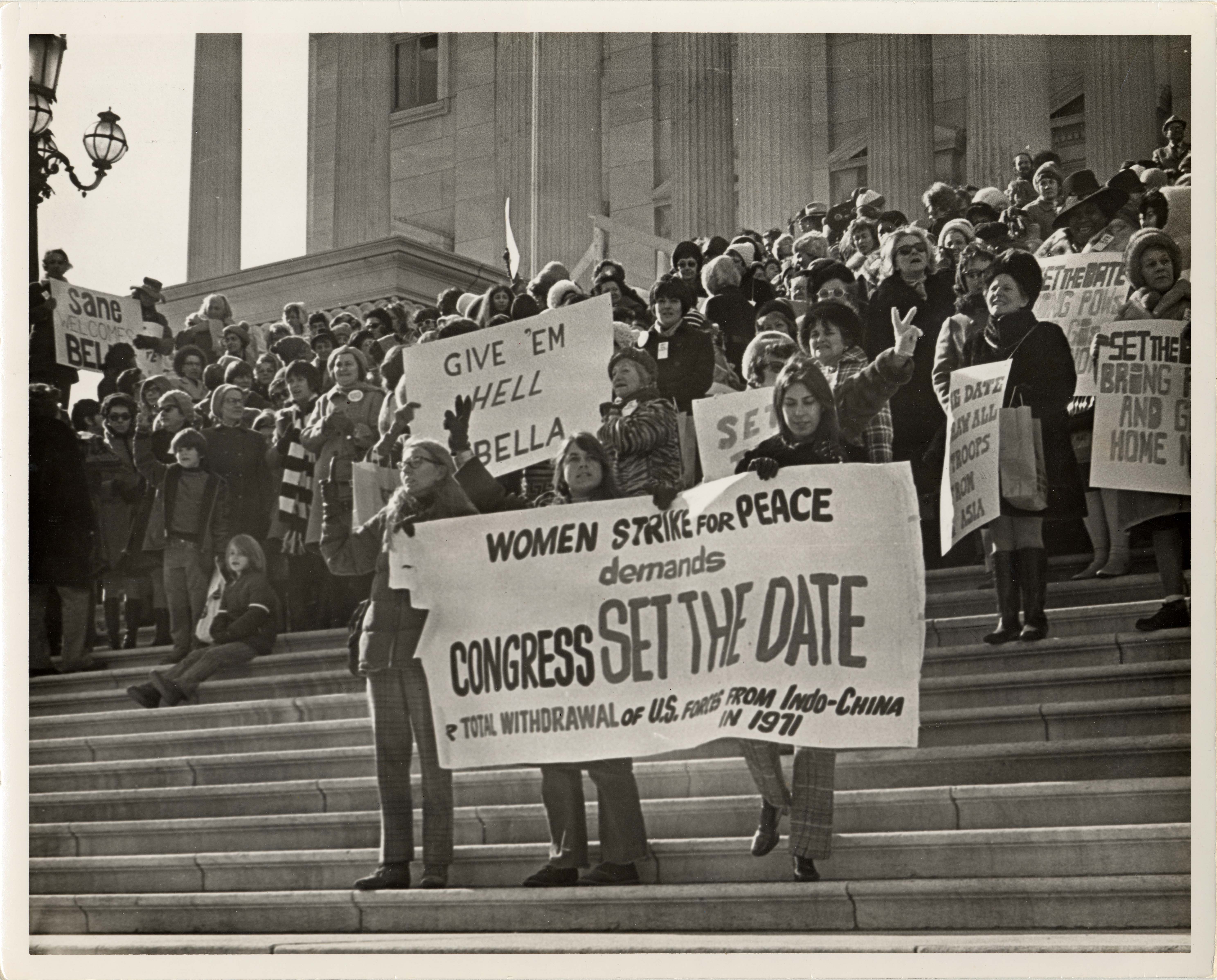
Event: Bella Abzug’s Inauguration,
Washington, DC.
January 21, 1971
Print D 101
9.5” x 7.5"
Bella Abzug's Inaguration int othe U.S. House of Representatives was celebrated by over 500 women who came out in the cold.
Bella Abzug
From the second month of WSP, New York
activist Bella Abzug was integral to the political direction of
WSP. Throughout her life Abzug was a vocal proponent of civil
rights, feminism, and anti-nuclear proliferation. A Columbia
University Law School graduate, Abzug was a powerhouse for social
justice in the male-dominated of New York, and later national
politics. Abzug successfully ran for the House of Representatives
in 1970 with the stron support of her consitituents and WSP and was
inaugurated in 1971.
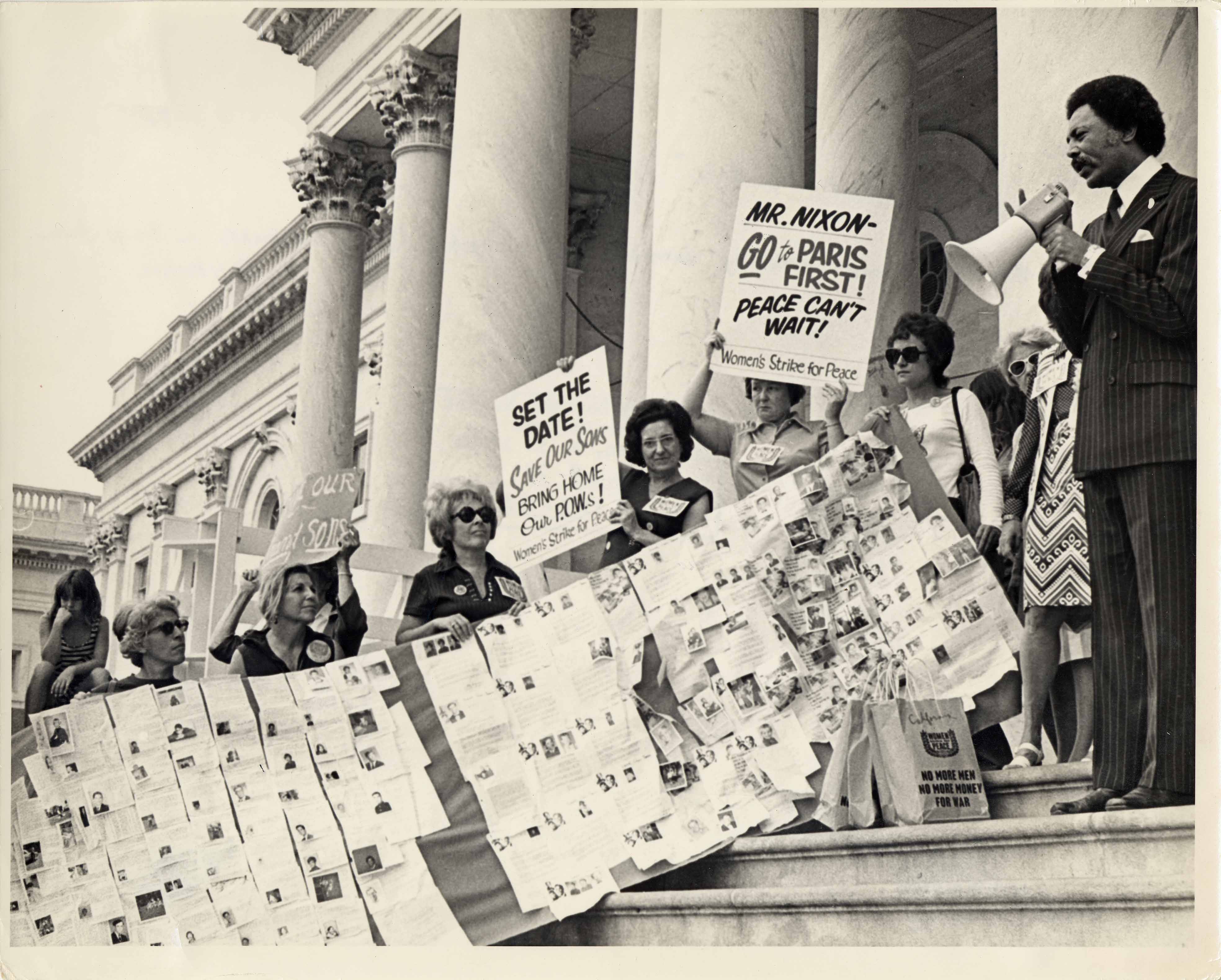
Ron Dellums on Megaphone
Event: Send a Letter to Nixon, Women Strike for Peace,
Whiteplains, New York
July 1971
Prints D 125 - 126
7.5” x 9.5”
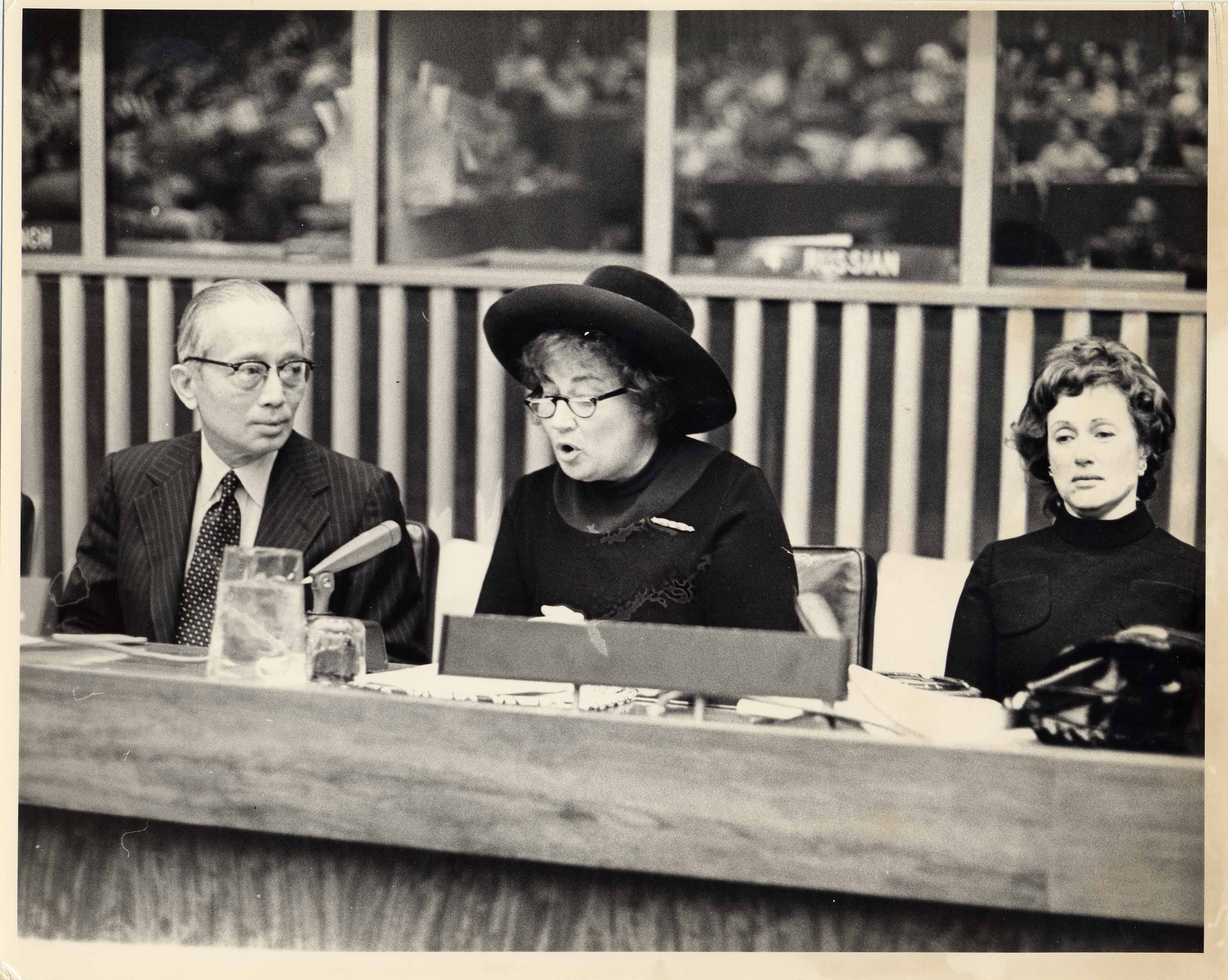
UN Secretary General U Thant, Bella Abzug, Amy
Swerdlow. (left to right)
Event: Women Strike for Peace receiving United Nations honor on
WSP 10th anniversary
United Nations, New York, New York
December 18, 1971.
Print D 200
9.5” x 7.5”
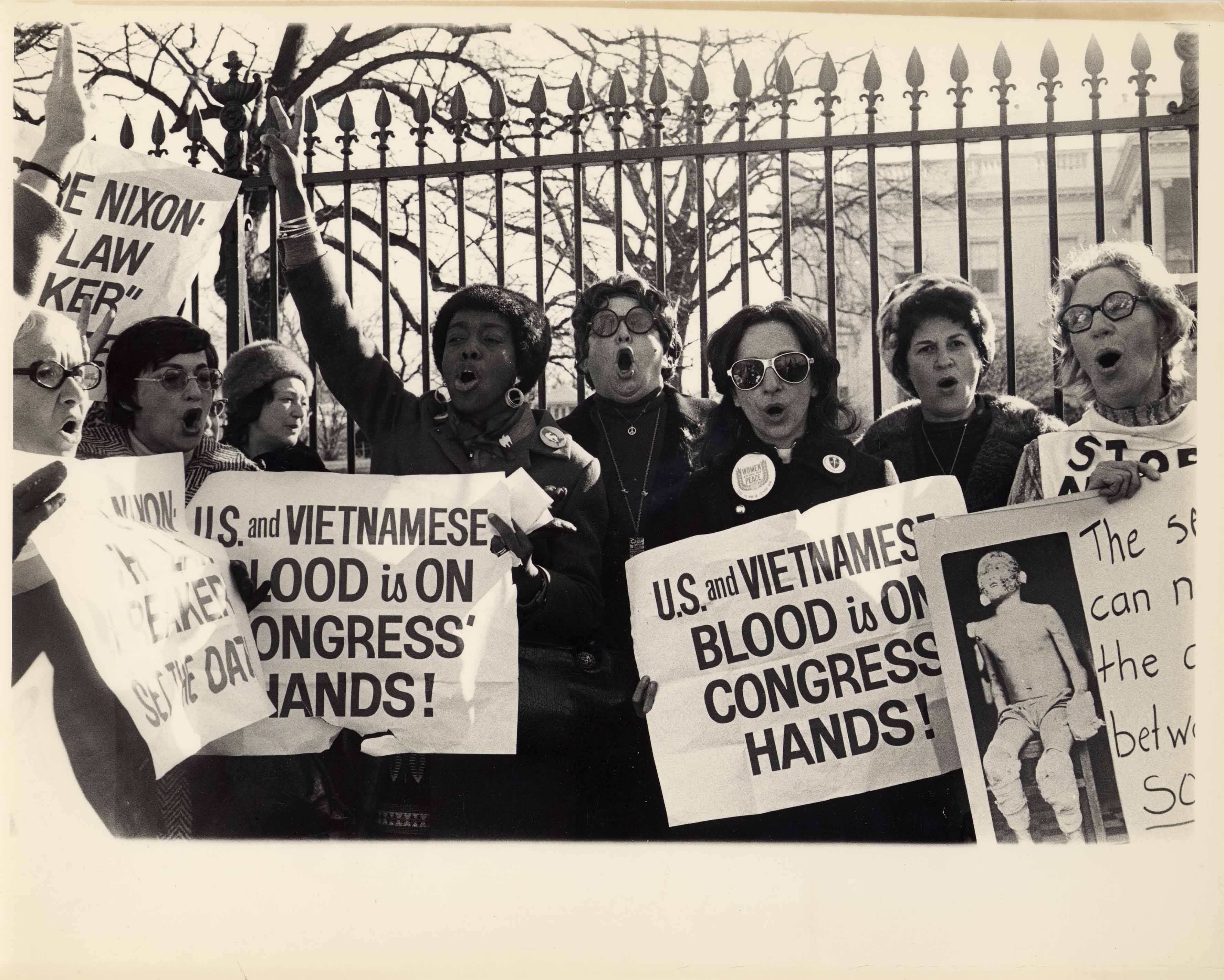
Censure Nixon Rally, Women Strike for Peace
Washington, D.C.
January 18, 1972
Print D 210
9.5” x 6.5”
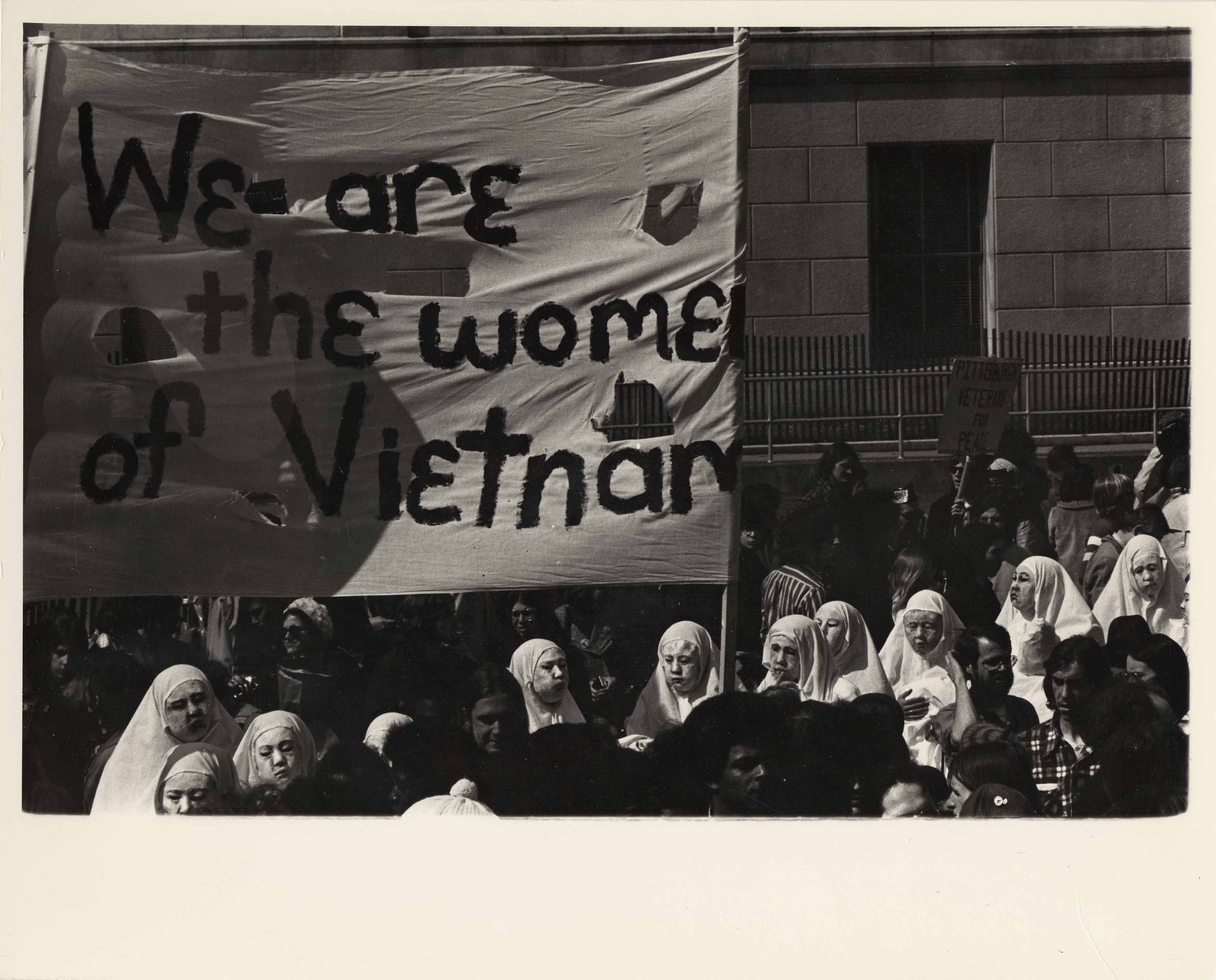
Event: Bread and puppet theater "We are the women
of Vietnam"
Women Strike for Peace Rally
Harrisburg, Pennsylvania
April 1, 1972.
Prints D 237 - 244
9.5” x 6.5”
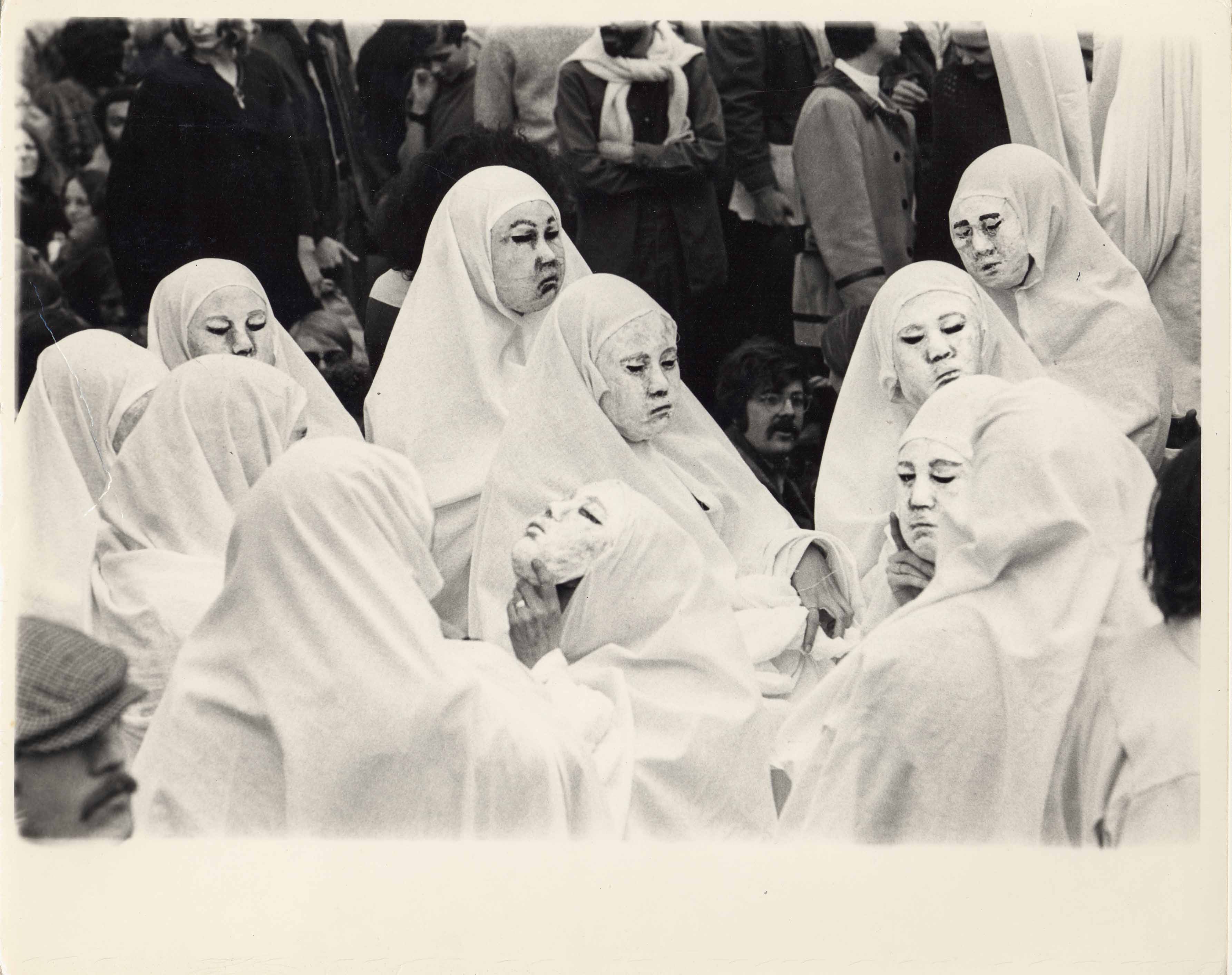
Event: Bread and puppet theater "We are the women of Vietnam"
Women Strike for Peace Rally. Harrisburg, Pennsylvania
April 1, 1972.
Prints D 237 - 244
9.5” x 6.5”
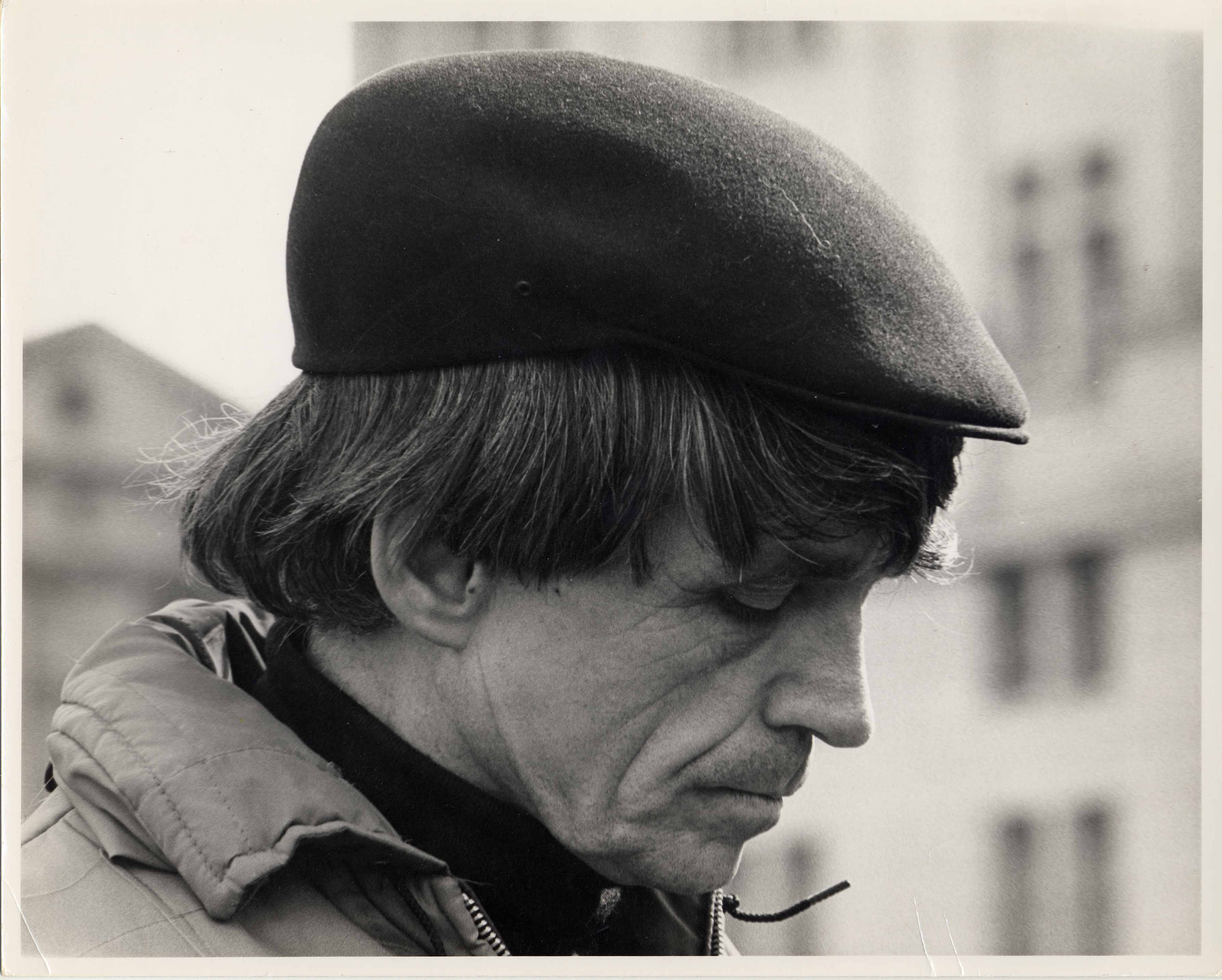
Daniel Berrigan
Event: Bread and puppet theater "We are the women of Vietnam"
Women Strike for Peace Rally. Harrisburg, Pennsylvania
April 1, 1972.
Prints D 237 - 244
9.5” x 7.5”
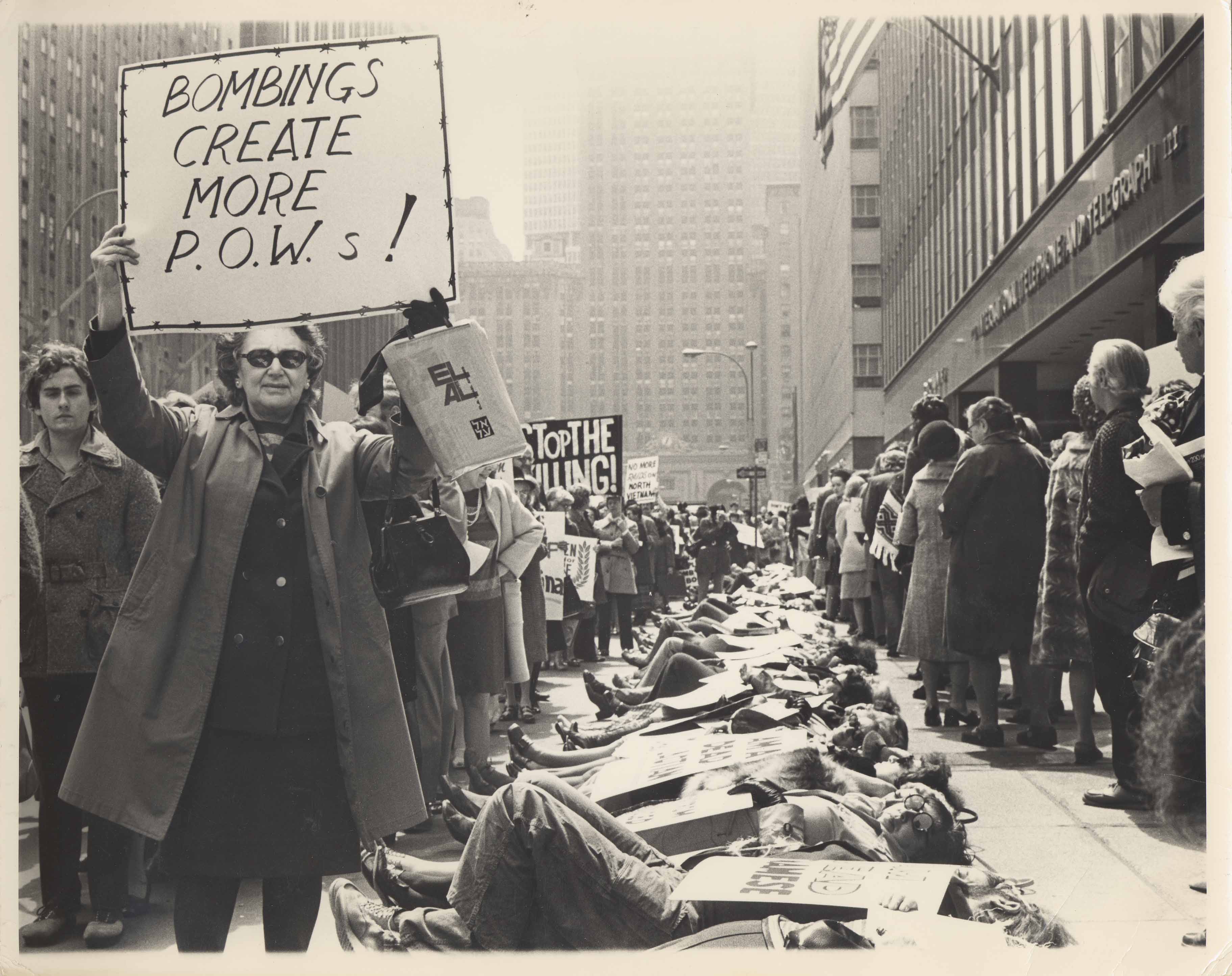
Event: Women Strike for Peace Die-In Outside of ITT Building
New York, New York
April 12, 1972
Print D 247, 249
9.5”x 7.5”
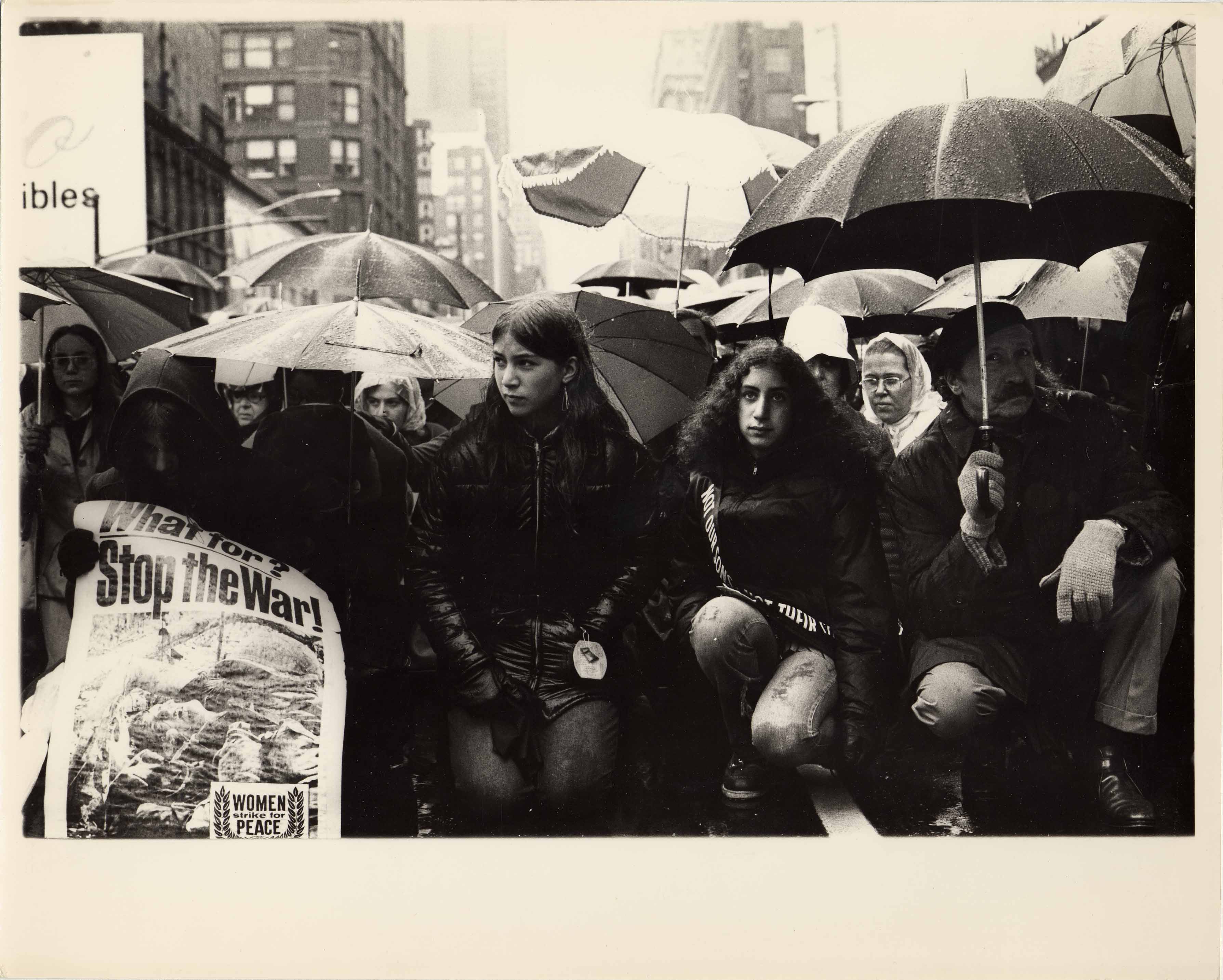
Event: Peace March, Women Strike for Peace
New York, New York
April 22, 1972
Print D 251
9.5” x 6.5”
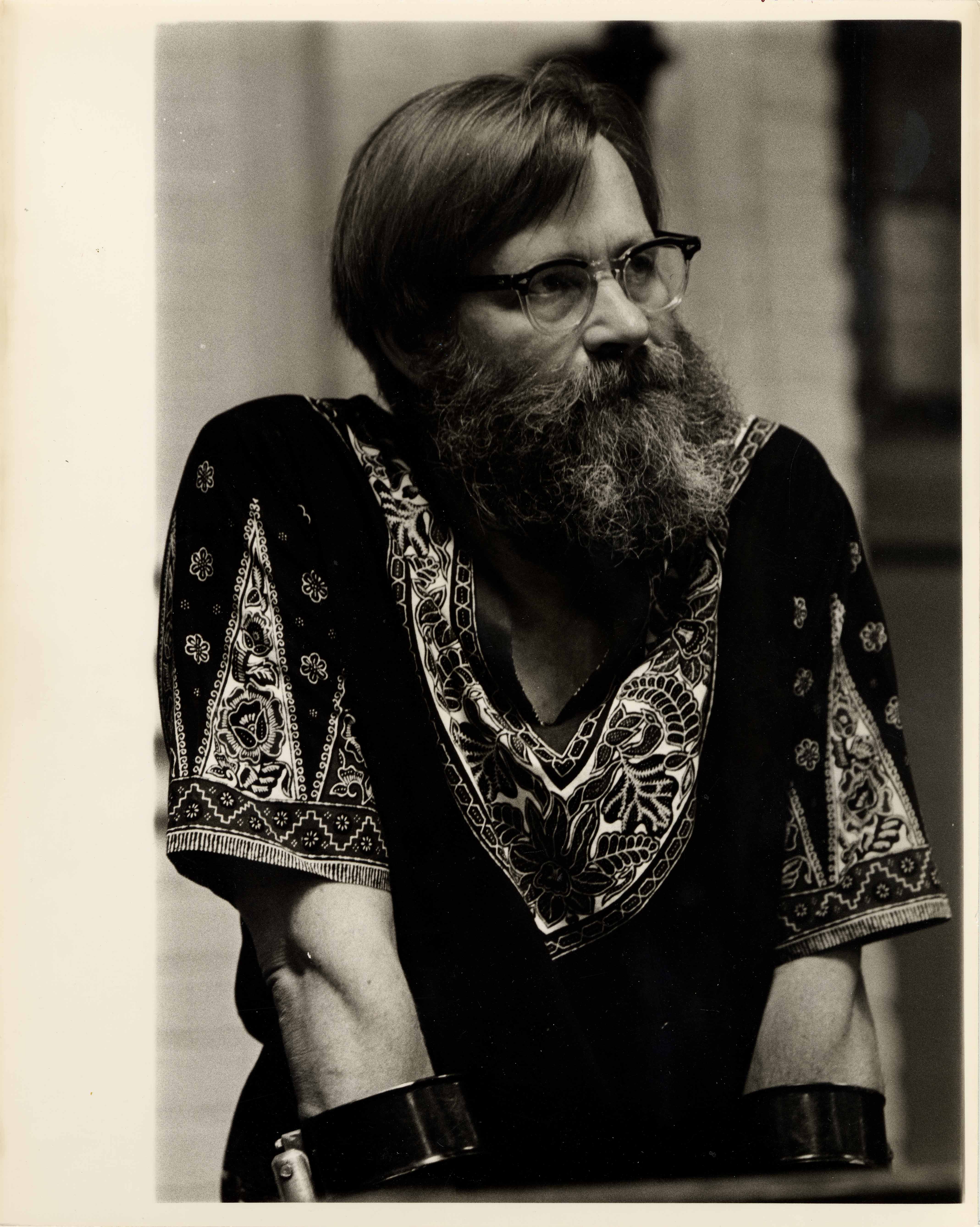
Bill Galvin
Event: Women Strike for Peace
Terrytown, New York
June 15, 1972
Print D 269
6.5" x 9.5"
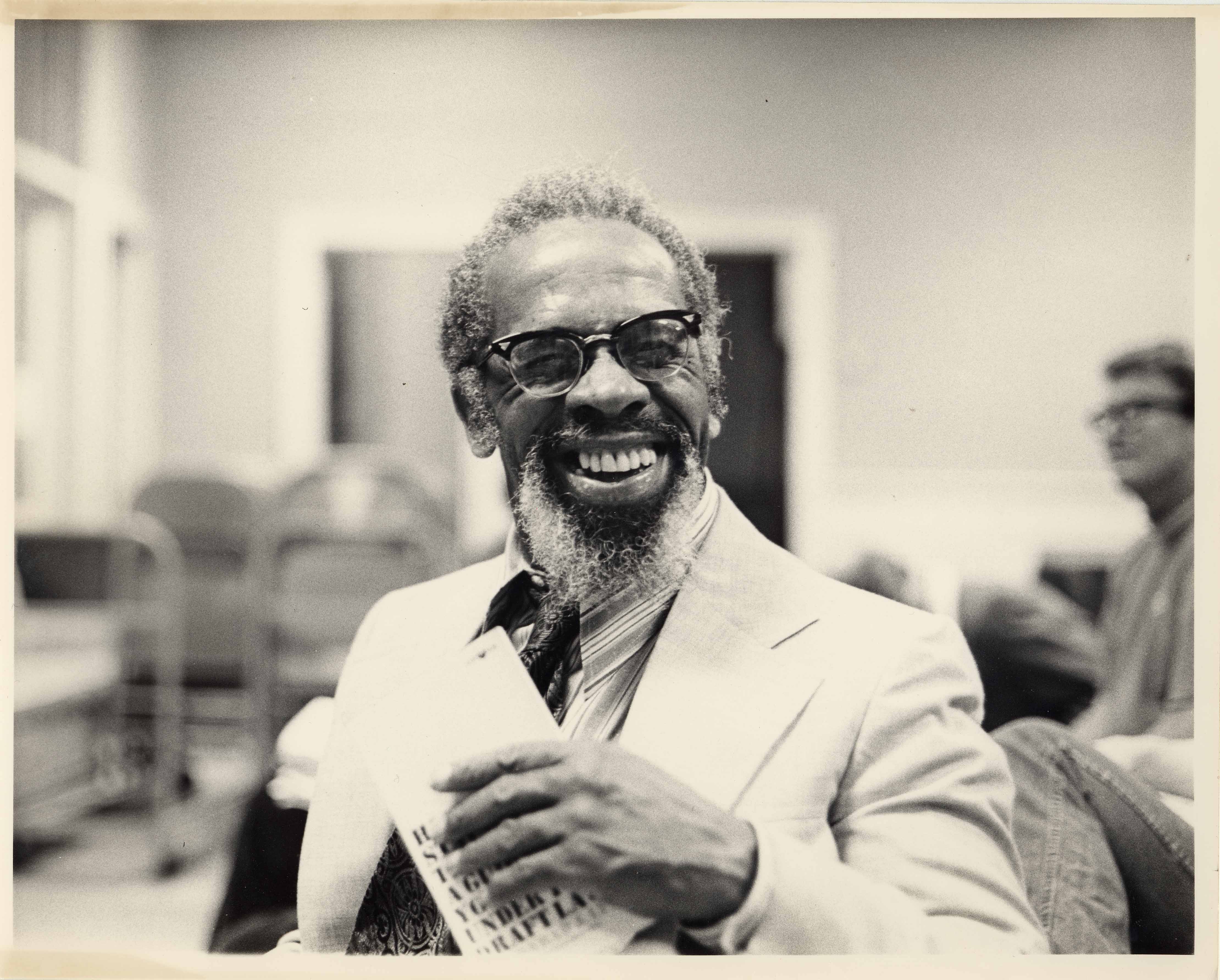
Conrad J. Lynn
Event: Women Strike for Peace
Terrytown, New York
June 15, 1972.
Print D 269
7.5" x 9.5"
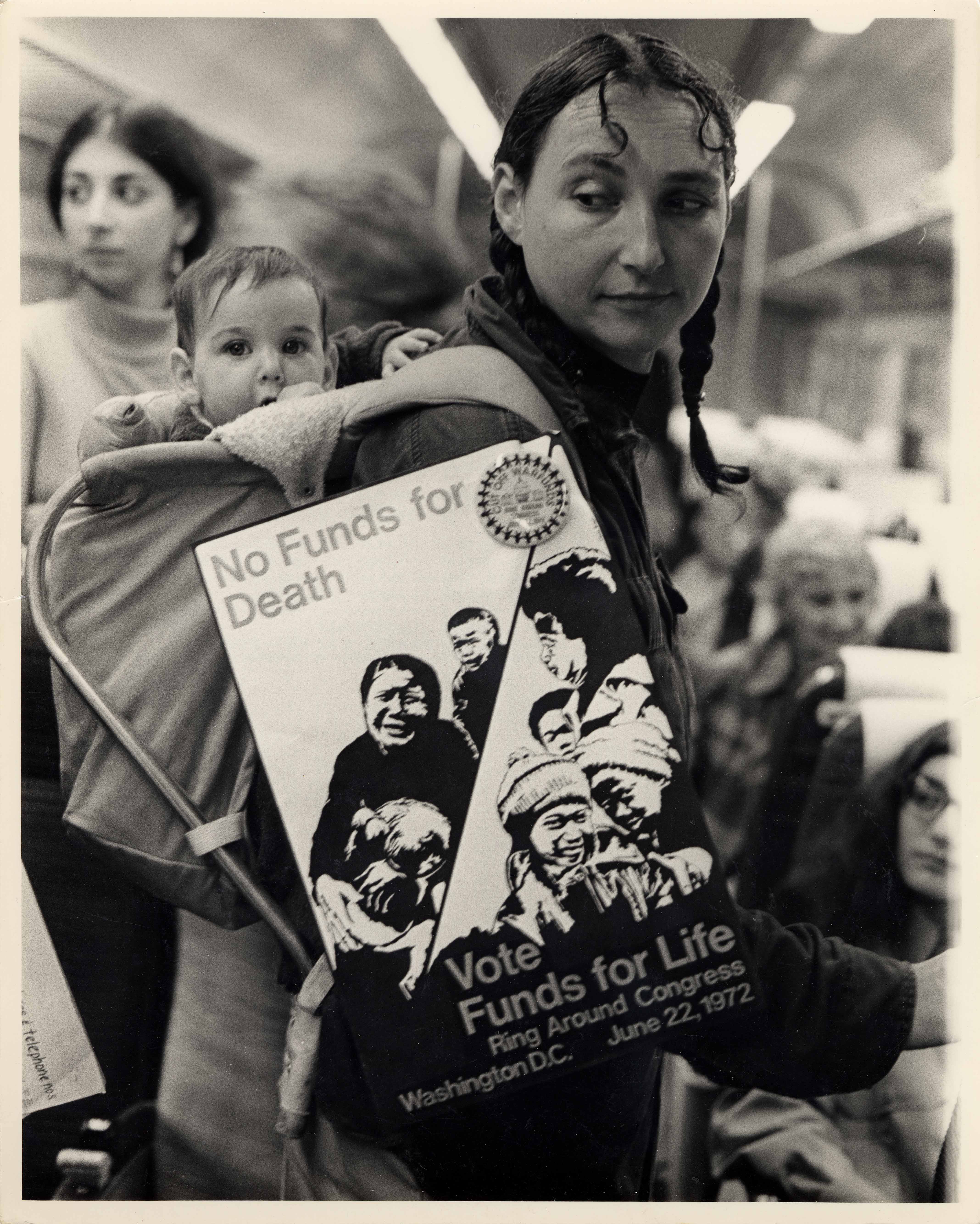
Event: Ring Around Congress
Washington, DC
June 22, 1972
Prints D 273 - 278
9.5” x 7.5”
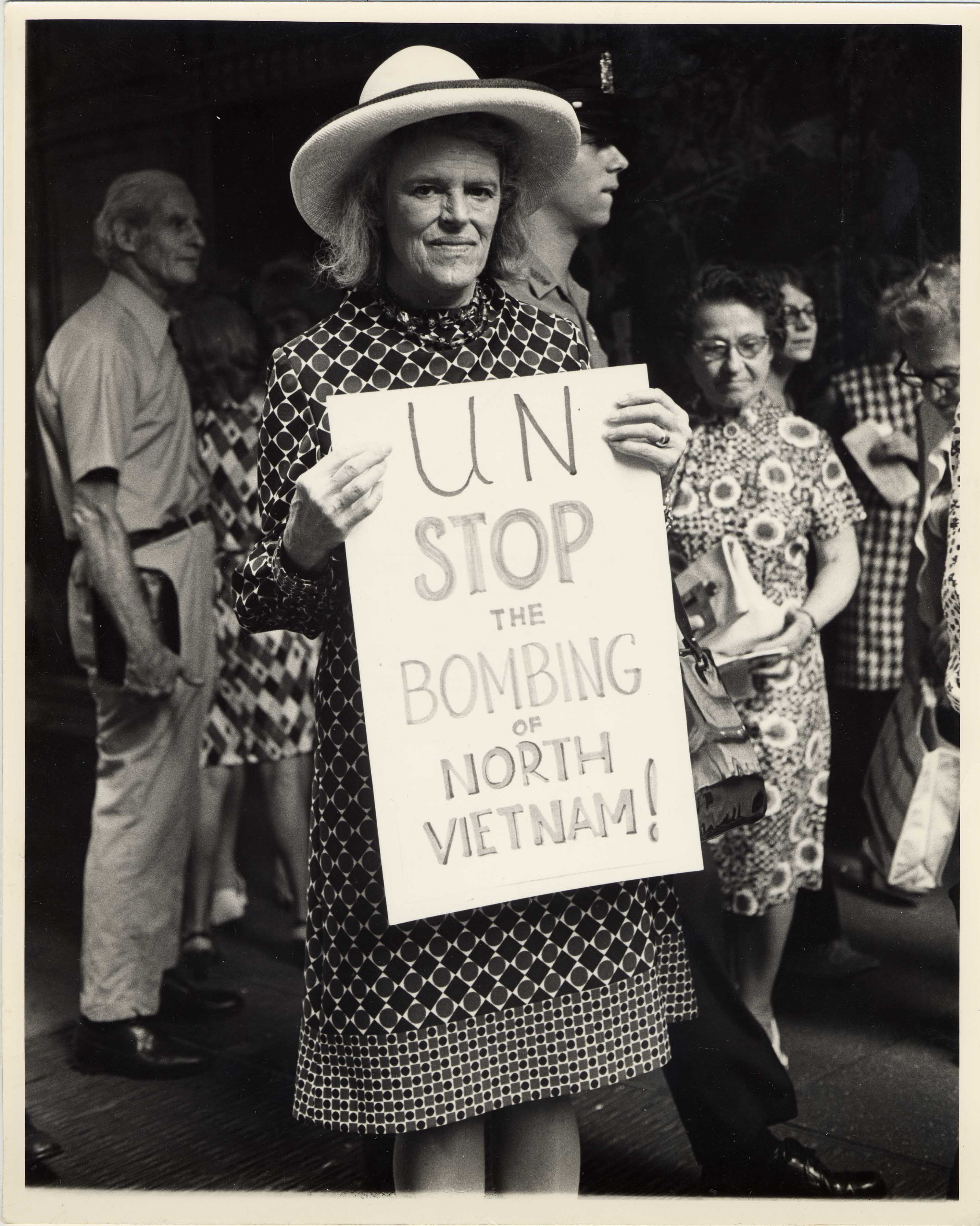
Helen Gahagan Douglas [?]
Event: Demonstration Against Nixon
Women Strike for Peace
September 19, 1972
Prints D 293 - 295
7.5" x 9.5"
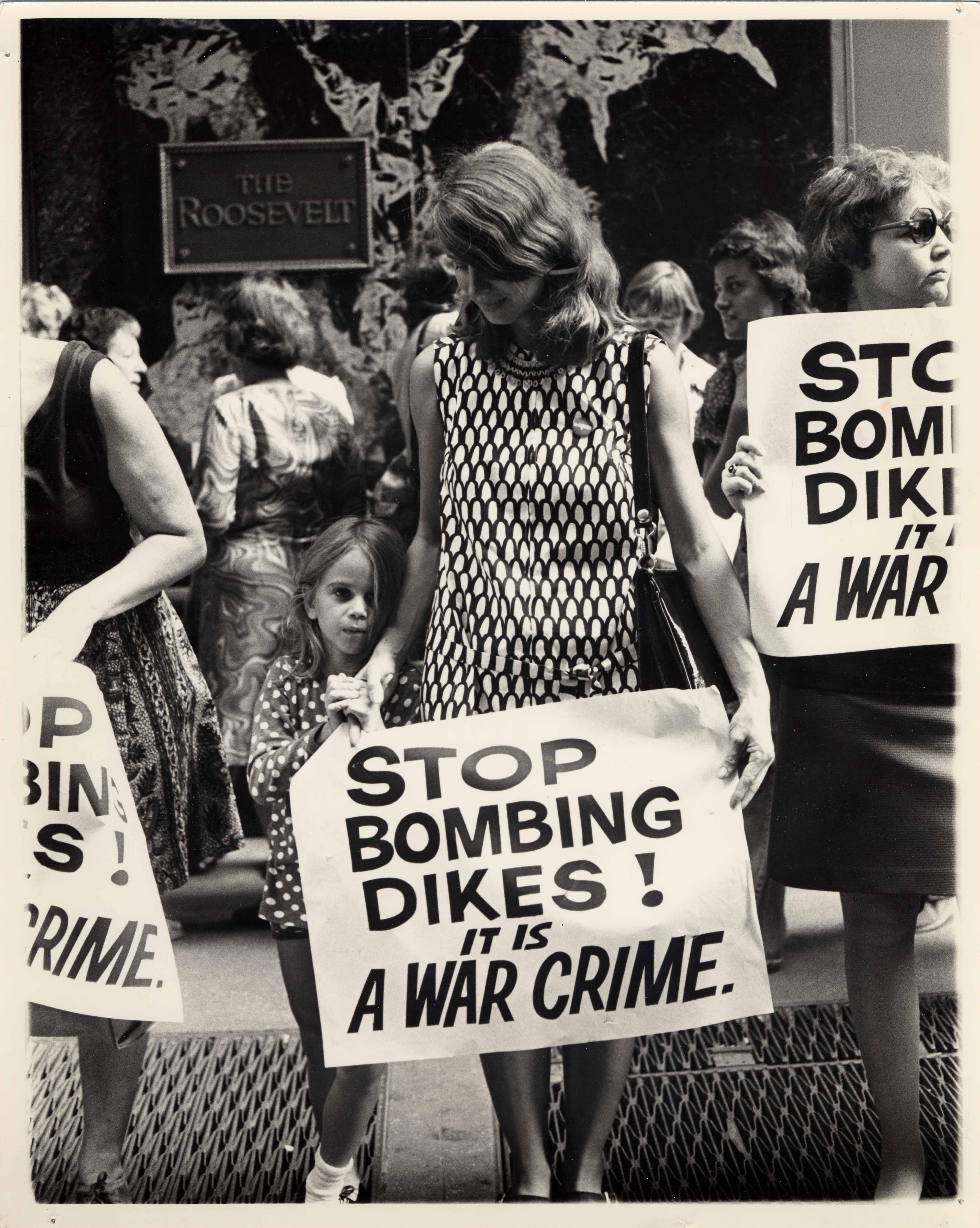
Event: Demonstration Against Nixon
Women Strike for Peace
September 19, 1972
Prints D 293 - 295
7.5" x 9.5"
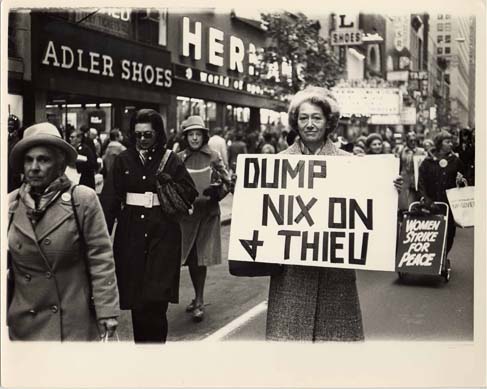
Elizabeth Moos (far left), Dagmar Wilson (right)
Event: Anti-Thieu Demonstration
Women Strike for Peace
New York, New York
November 1, 1972
Print D 304
9.5” x 7”
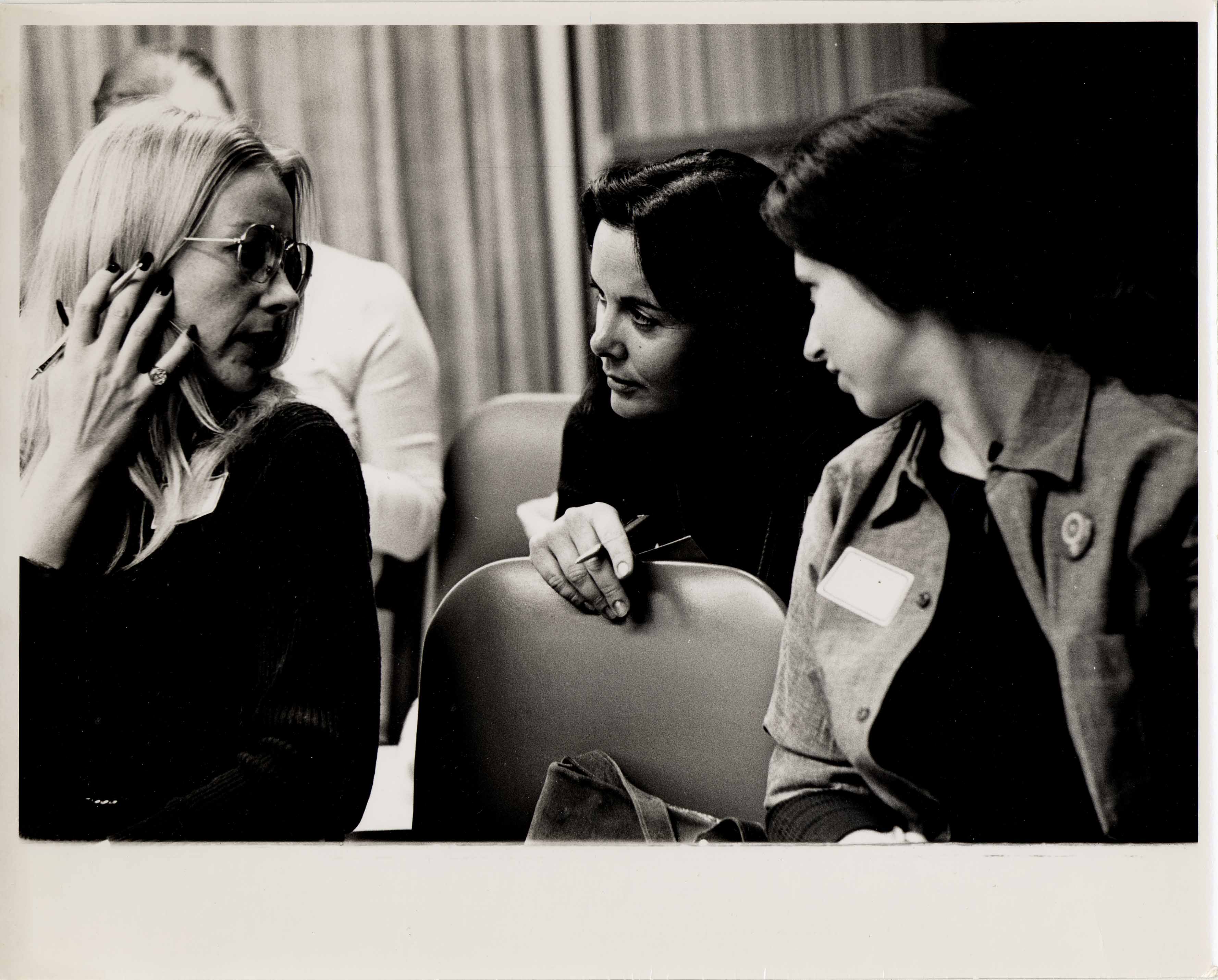
Event: Women Strike for Peace National Conference
Santa Barbara, California
October 9-10, 1972
Prints D 315 - 321
7.5" x 9.5"
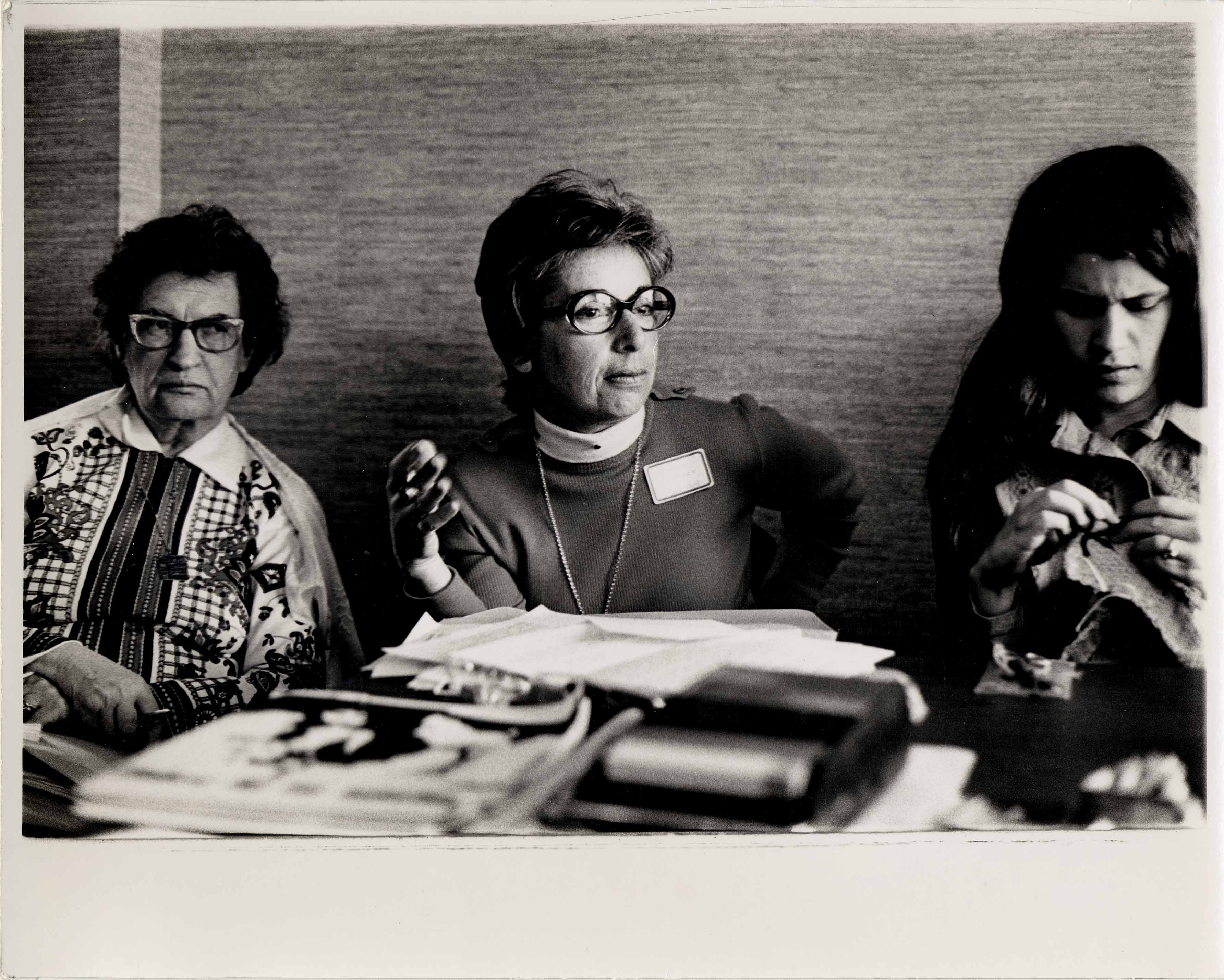
Celia Zamok Ptashne [far left]
Event: Women Strike for Peace National Conference
Santa Barbara, California
October 9-10, 1972
Prints D 315 - 321
6.5" x 9.5"
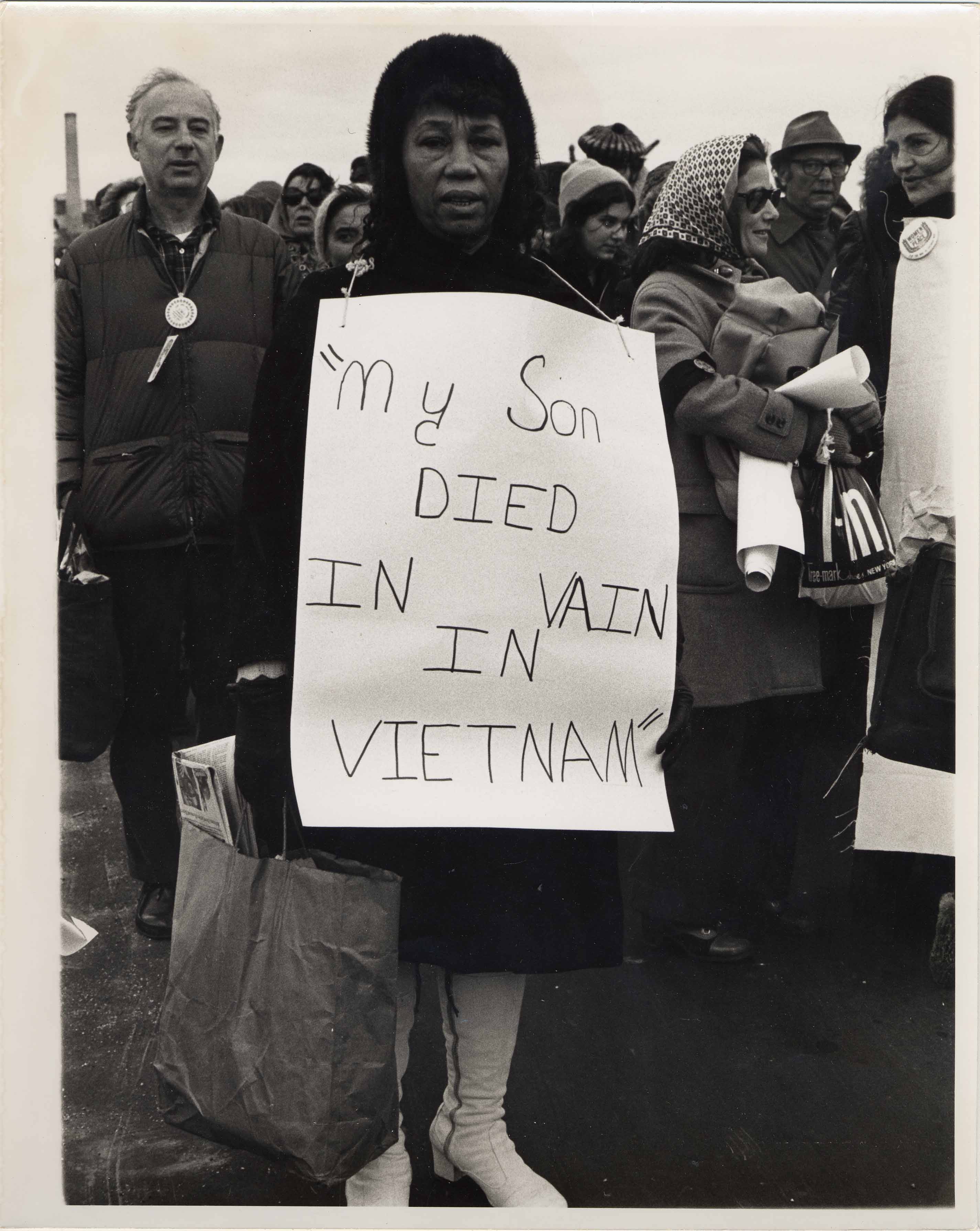
Helen Boston, “My Son Died in Vain in Vietnam”
Event: Convocation and Lobby, Women Strike for Peace
Washington, D.C.
January 4, 1973
Prints D 325 - 326
9.5” x 7”
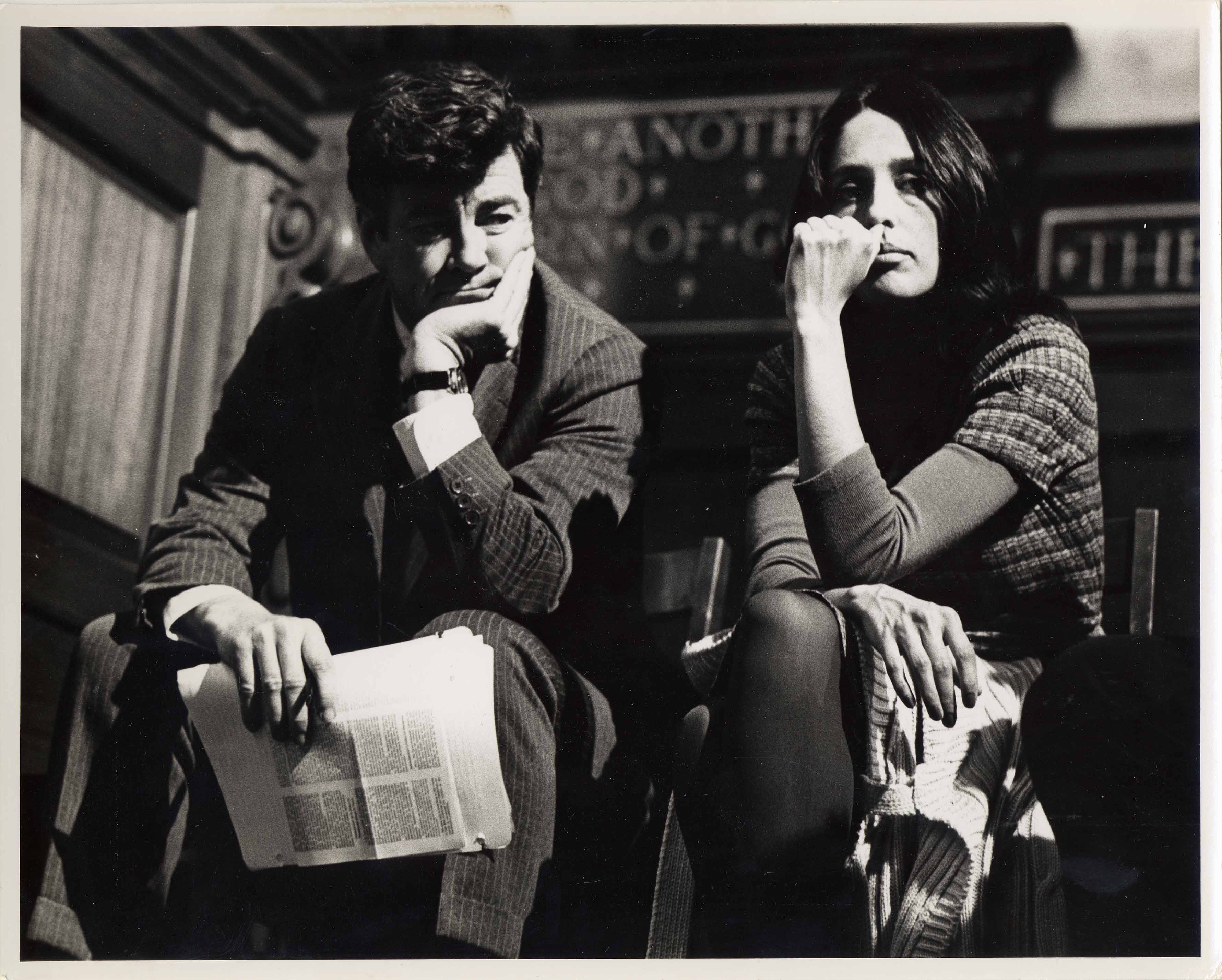
William Sloan Coffin and Joan Baez
Event: Convocation and Lobby, Women Strike for Peace
Washington. D.C.
January 4, 1973
Prints D 325 - 326
7.5" x 9.5"
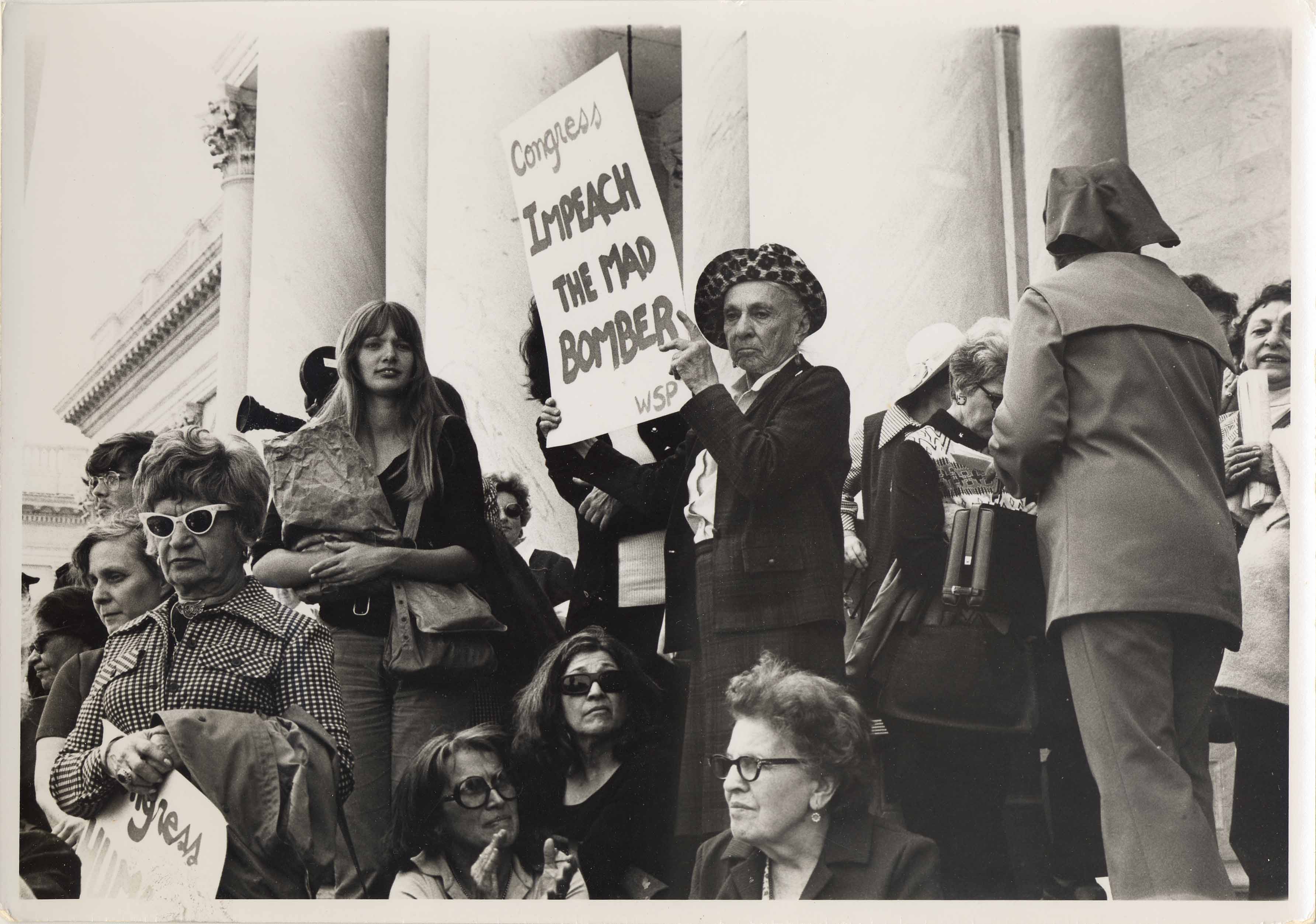
Elizabeth Moos (holding sign)
Event: Women Strike for Peace Anti-War Demonstration
Capital, Washington, D.C.
March 22, 1973
Prints D 350 - 354
7.5" x 9.5"
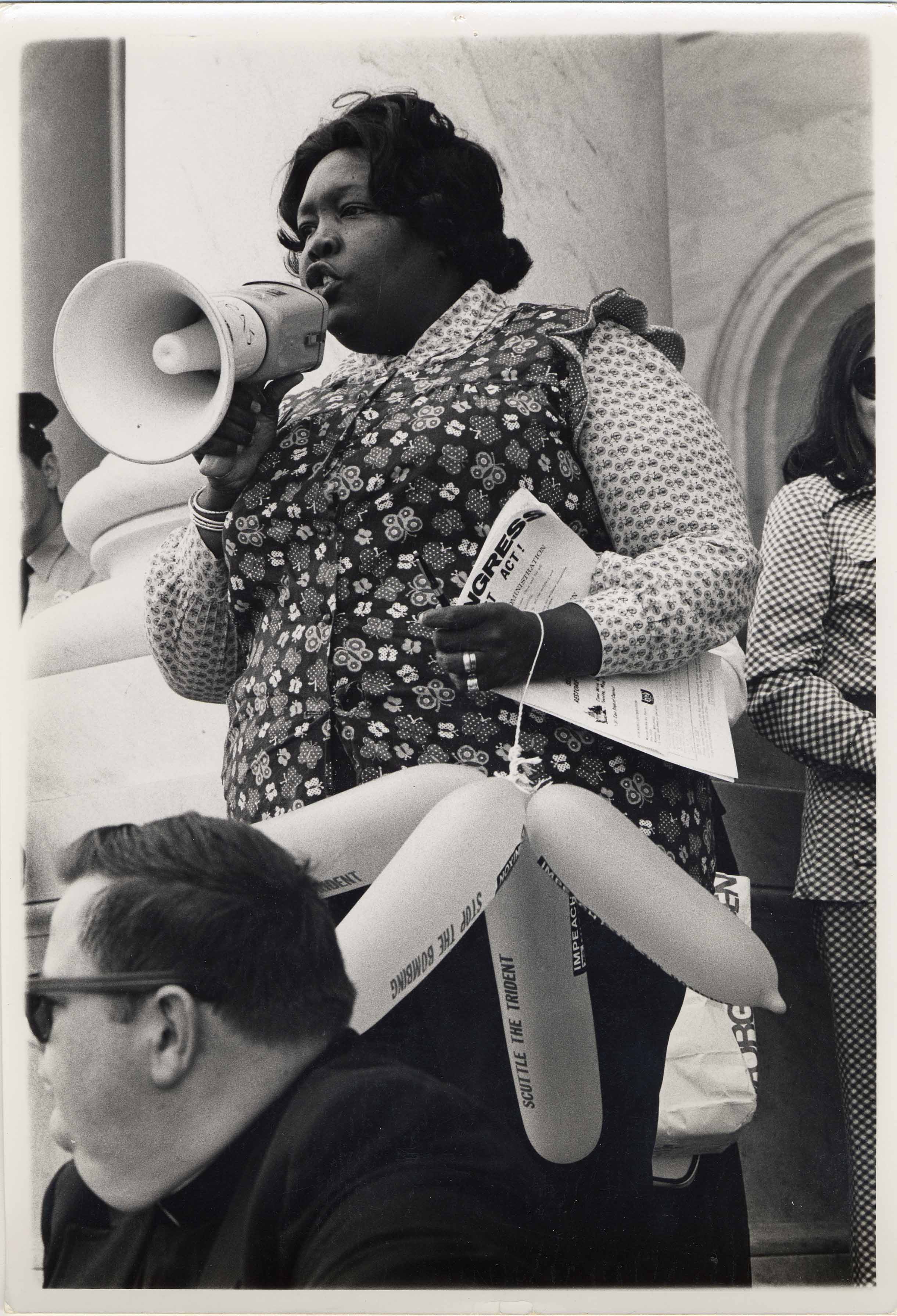
Event: Women Strike for Peace Anti-War
Demonstration
Capital, Washington, DC
March 22, 1973
Prints D 350 - 354
7.5" x 9.5"
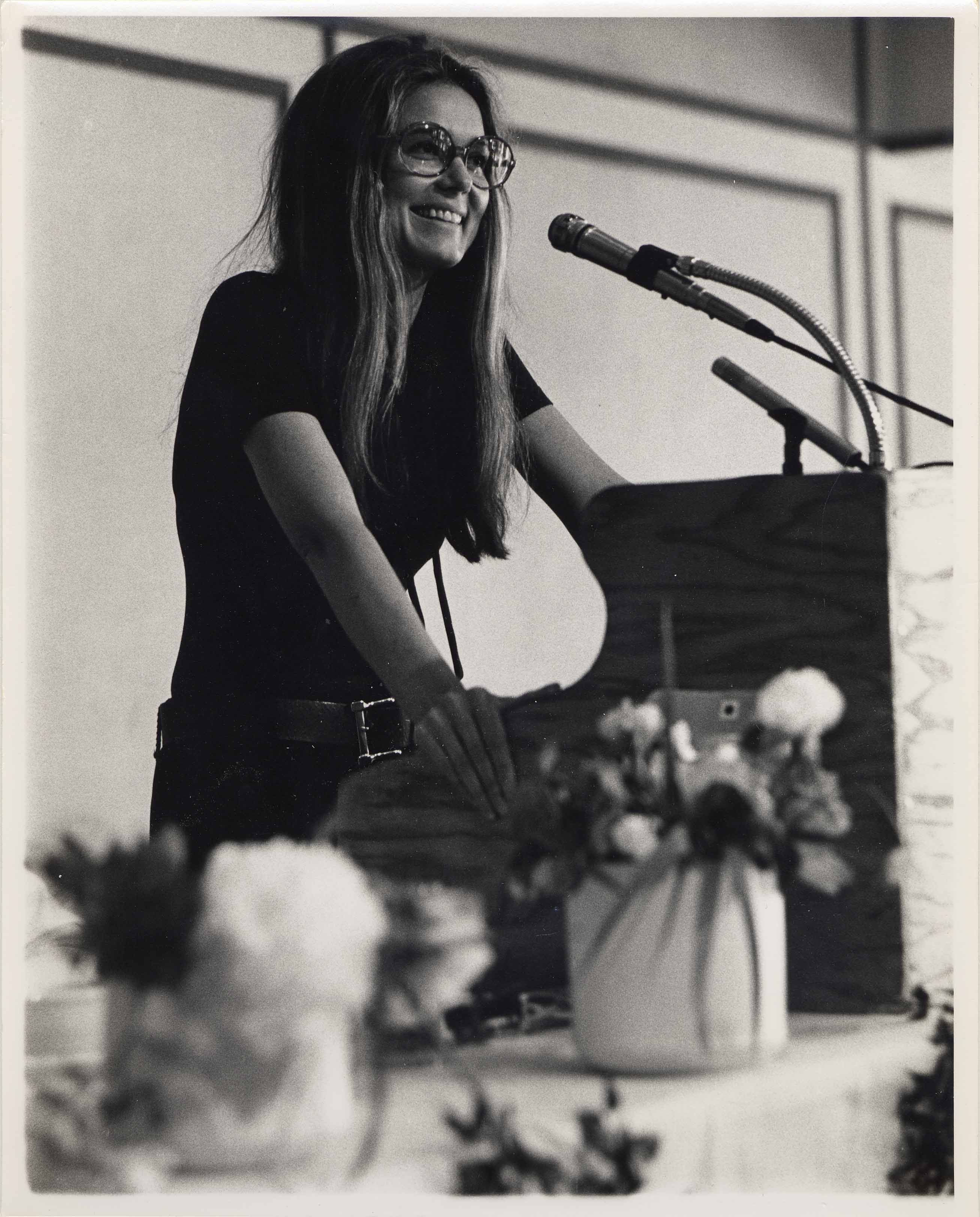
Gloria Steinem
Event: Women Strike for Peace and Women Waging Peace Organization
Luncheon
New York, New York
June 8, 1973
Prints D 358 - 359
7.5" x 9.5"
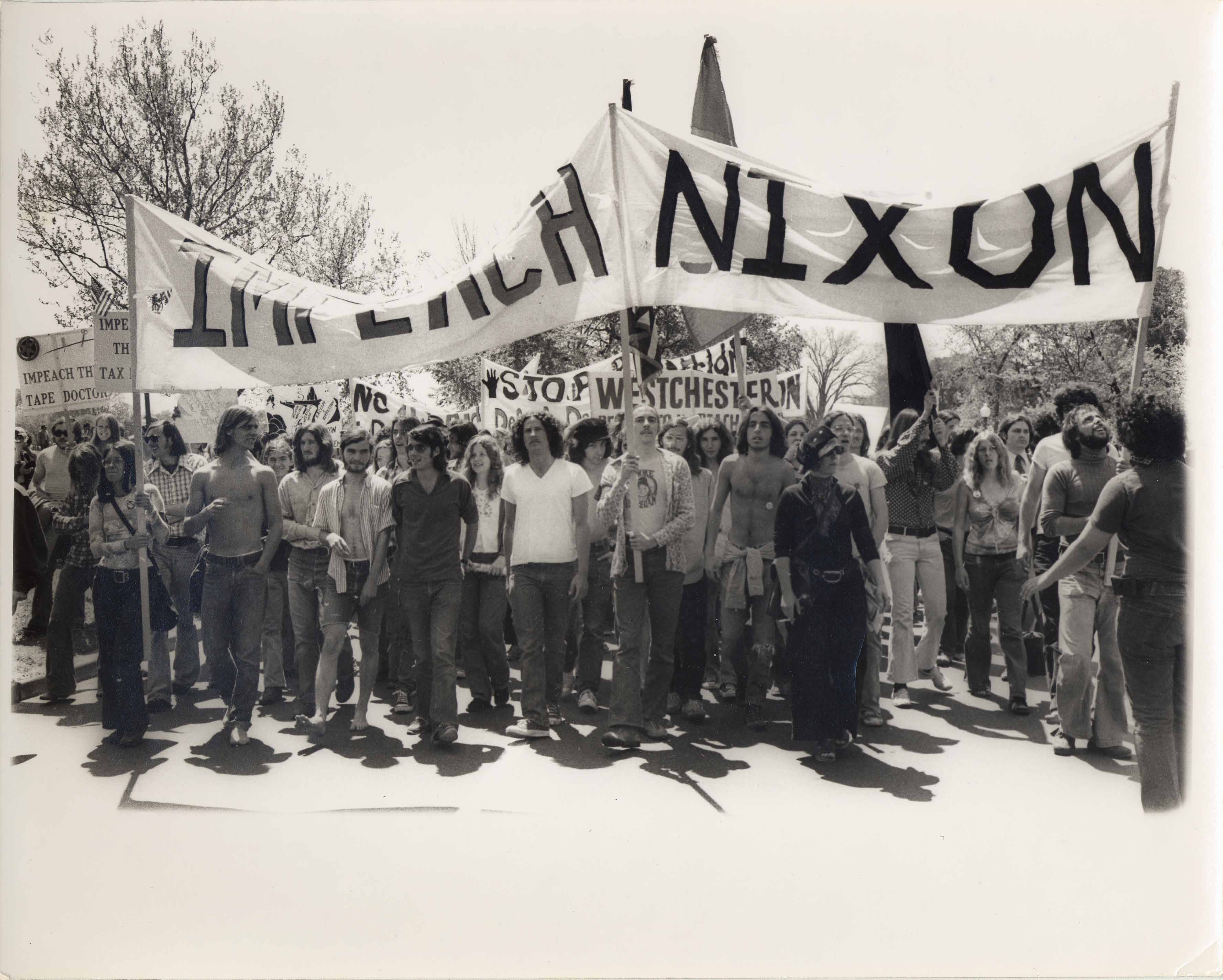
Event: Impeach Nixon Rally
Washington, D.C.
April 27, 1974
Prints D 407 - 411
6.5" x 9.5"
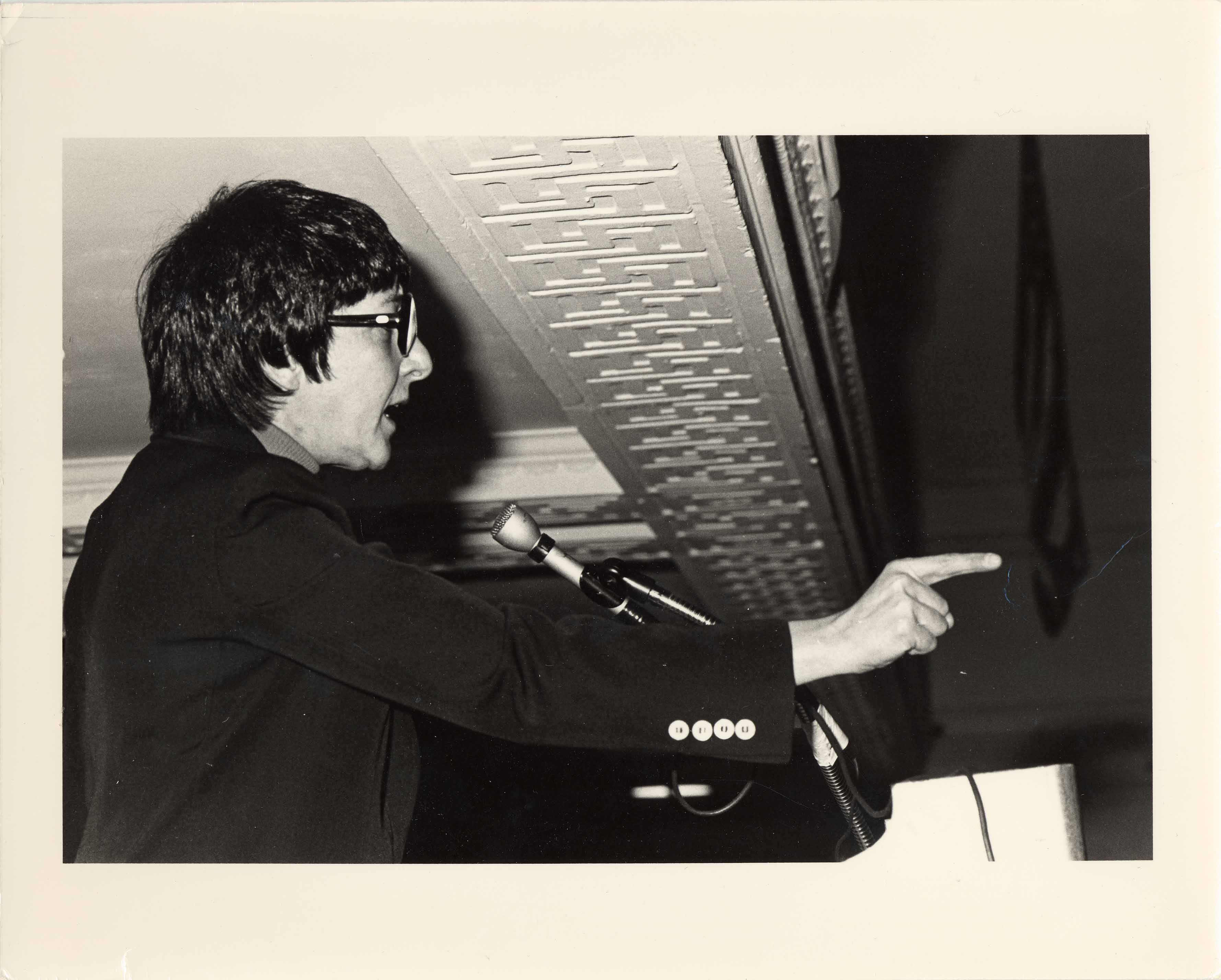
Midge Costanza, White House aide for President Carter
Event: Women Strike for Peace Luncheon,
Westchester, New York
June 11, 1974
Prints D 433 - 434
6.5" x 9.5"
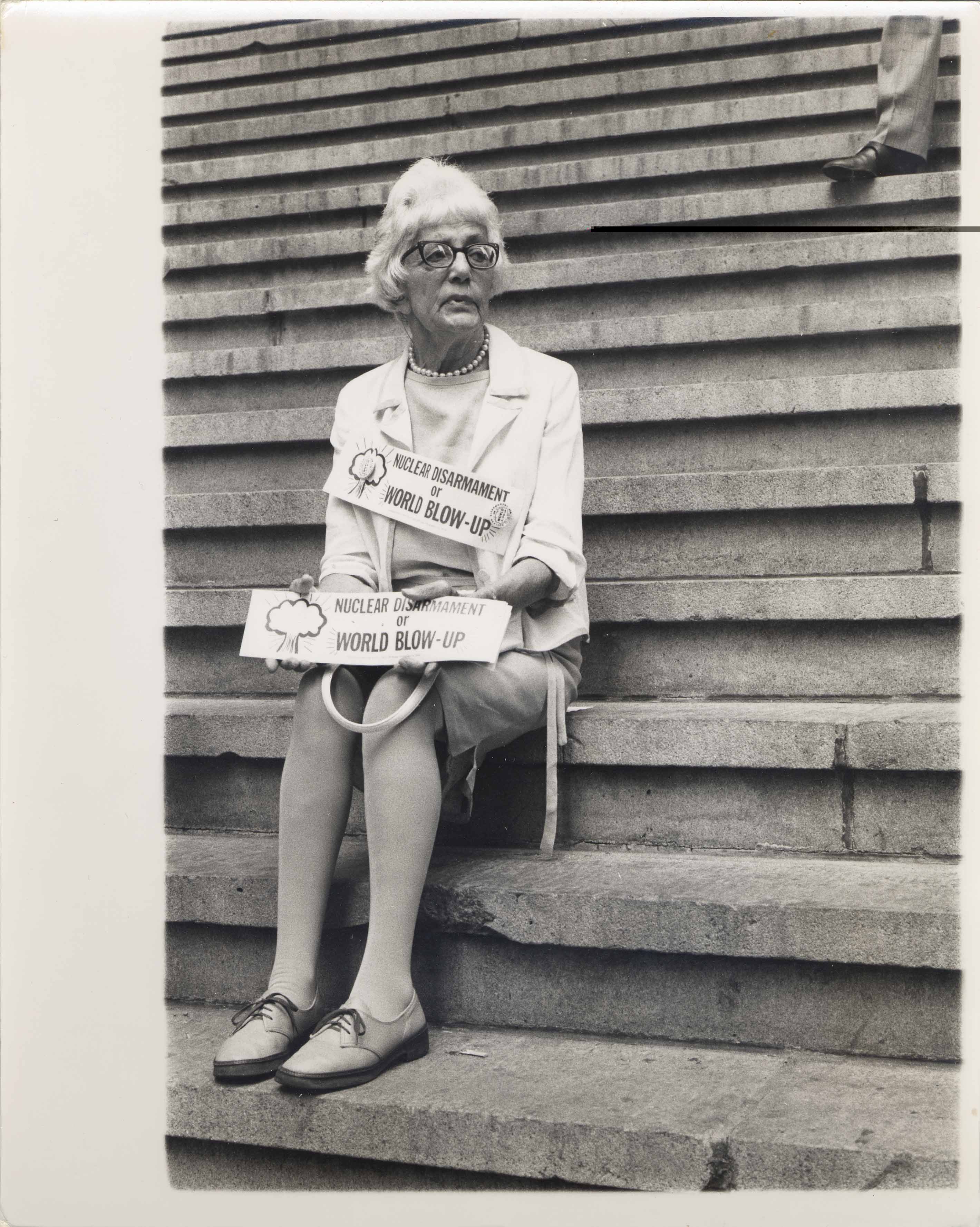
Event: Women Strike for Peace Demonstration on
Broad and Wall Street
New York, New York
September 13, 1974
Print D 450
9.5" x 6.5"
Sources
Amy Swerdlow. Women Strike for Peace. The University
of Chicago Press: Chicago, IL, 1993.
Harriet Hyman Alonso. Peace as a Women’s Issue.
Syracuse University Press: Syracuse, NY, pp. 202-210, 221-222.
Finding aid for Dorothy Marder Collection, Swarthmore College Peace Collection
Created 2010-2011 by Elizabeth
Matlock and Wendy Chmielewski
This file was last updated on
August 15, 2018
